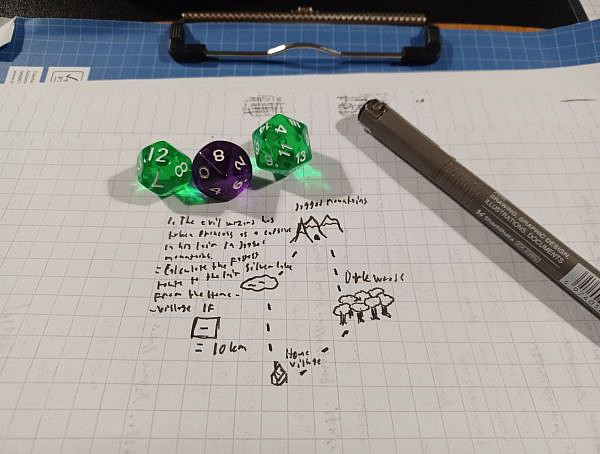Katherine J. E. Hewett, Bethanie C. Pletcher and Guang Zeng’s 2018 article “The 21st century classroom gamer” explores how high school students in the 21st century learn and succeed academically by playing video games. The research is based upon crucial work and life skills acquired through gaming in the 21st century. Four case studies were conducted in three high school-level 3D Modeling and Animation courses inquiring participants about their past and current gaming experiences. The education received by students is defined by “Four Cs”: critical thinking and problem solving, communication, collaboration and creativity and innovation. The aforementioned skills are perceived essential for academic excellence and coping with the demands of the global economy.
The research presented in the article bases its theoretical framework in connectivism, social constructivism and interpretivism. Connectivism provides an interconnected and collaborative learning environment for students in the digital age. Social constructivism perceives learning as a collaborative event, where experimenting and hypothesis testing is key. Interpretivism evaluates and analyses language and discourse in research participants’ interview accounts. The article doesn’t name the researcher behind the research, but she has an extensive background in technology and education, with a PhD in curriculum and instruction. She has pioneered in the use of video games and technology in teaching.
The participants for the study were selected based on their gaming experience, gender and course enrollment status. This was done through purposeful sampling, which obtains an understanding of the participant by the phenomenal insight of them, i.e. what 21st-century skills students perceived to learn through gaming. The researcher began to analyze the data by coding the case study interviews, observations and artifacts, after which she used topic coding to search for deeper meanings. The participants chose a pseudonym to be referred to in the article.
The four participants named “Nano”, “Celeste”, “Wonder” and “Sterling” were ultimately chosen for the study. They were interviewed about the games they played and for how long, how the games made them feel, their online gaming friends and how they co-operated as a team, their expertise and skills in game worlds, building, trading, earning money in games, and lastly, how they perceived their gaming experiences to impact their future studies and life. The researcher established five major themes based on the coding process: “The strategist”, “the creator”, “the communicator”, “the hero” and “elite”. These themes were in line with the “Four Cs”, i.e. skills perceived crucial in succeeding academically.
“The strategist” meets objectives, accomplishes missions and advances within games by strategizing and collaborating with teammates. Also, flexibility and problem-solving skills are useful to accomplish common goals in games. “The strategist” analyses other players’ in-game decisions to advance in the game. “The creator” uses skills learned in video games in real life. For example, “Nano” got interested in game design by playing Team Fortress 2. He also got into trading and selling game items on Steam. “Celeste” creates graphic designs for games taking inspiration from video games. “The communicator” builds online relationships to advance their gameplay. They form bonds through common interests and experiences. These relationships can become very important in the player’s life and can provide the otherwise needed support and security. “Wonder” has formed long-lasting relationships with her gaming friends, which she perceives as her family. “The hero” loves a great story and seeks out to help others in the game. They can demonstrate it by using their character’s special powers, such as healing or reviving. This way, the player can portray their altruistic nature in the game, thus becoming the heroes of their own stories. Lastly, the “elite” is a highly skilled and experienced gamer, who has earned their status and respect in the gaming community. They have grown in the digital era and are highly adept with technology. All four participants are considered “elites” in the study. They have great knowledge in technology and know how hardware can impact their gaming.
In conclusion, the study indicated that gamers, who have been playing since childhood could bring unique skills into the classroom, i.e. collaborative and leadership skills. But the education system is not using gaming in the classroom and thus not utilizing its potential. The article also acknowledges the need for more research in this area. Nevertheless, in the future, 21st century gamers could be highly sought after in the workforce to advance future innovation.
The article “The 21st century classroom gamer” by Katherine J. E. Hewett, Bethanie C. Pletcher and Guang Zeng was published in Games and Culture: A Journal of Interactive Media. It can be read from https://doi.org/10.1177/1555412018762168.
The picture “ilearn2” by Annitix1 is licensed under CC BY-NC-SA 2.0.
You might also like
More from Game Research Highlights
How do you want to do this? – A look into the therapeutic uses of role-playing games
Can playing RPGs contribute positively to your wellbeing? A recent study aims to find out how RPGs are being used …
Eldritch horrors and tentacles – Defining what “Lovecraftian” is in games
H.P. Lovecrafts legacy lives today in the shared world of Cthulhu Mythos and its iconic monsters. Prema Arasu defines the …
Are Souls Games the Contemporary Myths?
Dom Ford’s Approaching FromSoftware’s Souls Games as Myth reveals the Souls series as a modern mythology where gods fall, desires …
















